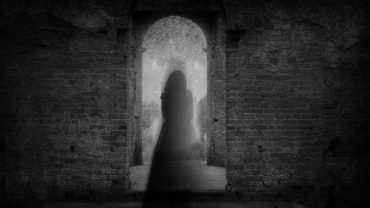From the Komodo dragon to the giant squid, history is peppered with creatures originally dismissed as mythical only to emerge as real. However, in many cases, it’s the other way around: familiar animals are mistaken for monsters, their appearances exaggerated by fear or fleeting glimpses in the wild. With their towering stance and versatile appearance, bears have sparked more than a few monster myths.
So, what infamous cryptids might have actually been misidentified members of the family Ursidae? We’re exploring some paw-sitively fascinating examples.
A Bearable Explanation

Prehistoric short-faced bear called Arcdotus (Credit: Warpaintcobra via Getty Images)
Bears are fascinating and diverse creatures. With their impressive size, shaggy coats, and ability to walk upright for short distances, it’s no surprise they’ve been mistaken for mythical beasts. Their presence in folklore isn’t limited to one region; bears feature prominently in myths and legends worldwide, often embodying strength, mystery, or even supernatural powers. But let’s explore how these majestic animals might have inspired cryptid lore.
Sasquatch

Was a standing brown bear mistaken for Bigfoot? (Credit: Paul Souders via Getty Images)
The towering figure of Bigfoot, or Sasquatch, is one of the most famous cryptids in North America. Described as a tall, hairy, ape-like creature, it supposedly roams the forests of the Pacific Northwest. Sightings often include reports of a bipedal figure with shaggy fur, leaving enormous footprints in its wake.
Bears, particularly black bears and grizzlies, are adept at standing on their hind legs to survey their surroundings. From a distance, a bear rising to its full height can easily resemble a Sasquatch. Furthermore, mangy or unusually thin bears can appear even more humanoid, as their fur clumps together in a way that mimics an unkempt coat.
Another potential source of confusion? Bears’ footprints. When a bear’s hind foot overlaps its front paw print, the resulting track can look remarkably similar to an oversized human footprint, adding fuel to the Bigfoot mystery.
The Yeti

The abominable snowman? (Credit: VICTOR HABBICK VISIONS/SCIENCE PHOTO LIBRARY via Getty Images)
High in the Himalayan Mountains, locals tell tales of the Yeti, a cryptid shrouded in snow and secrecy. Known as the “Abominable Snowman,” it’s said to be a large, ape-like creature adapted to the frigid conditions of its mountainous habitat.
Scientists have proposed that many Yeti sightings could be attributed to the Himalayan brown bear or the Tibetan blue bear, both rare and elusive species. Their thick fur, large size, and solitary nature align with the descriptions of the Yeti. In 2014, DNA analysis of supposed Yeti hair samples revealed genetic matches to polar bears, further blurring the line between myth and reality.
Bears in snowy regions also leave distinctive tracks, particularly when melting snow distorts their paw prints, creating an otherworldly impression of humanoid feet. Combined with the thin air and rugged terrain, it’s easy to see how a fleeting bear sighting could transform into an enduring legend.
The Boggy Creek Monster

Is the Boggy Creek Monster actually a black bear? (Credit: Bucks Wildlife Photography via Getty Images)
The Boggy Creek Monster, also known as the Fouke Monster, has been a source of intrigue in Arkansas folklore since the early 20th century. Described as a large, ape-like creature covered in dark fur, it’s said to inhabit the swamps and waterways around Fouke, Arkansas.
While many attribute the legend to a mysterious cryptid, the behaviour and appearance of the Boggy Creek Monster closely resembles that of a black bear. Bears are known to frequent swampy areas, where they forage for food and seek shelter. A black bear standing in murky water, with its fur slicked back, could easily be mistaken for a swamp monster in low light or through dense foliage.
The eerie atmosphere of the swamps, combined with fleeting glimpses of a bear, has likely given rise to exaggerated stories of the creature, immortalised in films like The Legend of Boggy Creek.
The Mapinguari

Is this the Mapingauri? (Credit: Nisian Hughes via Getty Images)
Deep in the Amazon rainforest, legends of the Mapinguari have persisted for generations. This cryptid is described as a massive, sloth-like creature with shaggy fur, razor-sharp claws, and a musky odour. It’s said to roam the jungle, striking fear into those who encounter it.
While some speculate that the Mapinguari could be a remnant of prehistoric ground sloths, others suggest it may simply be a misidentified spectacled bear, the only bear species native to South America. Spectacled bears are smaller than their North American cousins but share similar features, including thick fur and strong claws.
In the dense, shadowy rainforest, a spectacled bear could appear far larger and more intimidating than it actually is. The bear’s distinctive odour, a result of scent marking, might also contribute to the Mapinguari’s fearsome reputation.
The Florida Skunk Ape

Skunk Ape HQ (Credit: Jeff Greenberg via Getty Images)
The Skunk Ape, Florida’s answer to Bigfoot, has been reported in the swamps and wetlands of the southern United States for decades. Known for its strong, unpleasant smell and its resemblance to an ape, the Skunk Ape has become a legend among cryptid enthusiasts.
However, black bears in Florida may be the more grounded explanation for these sightings. Black bears are common in the state’s forests and swamps, where they can forage for food. Their ability to walk on hind legs, combined with their dark fur, makes them likely candidates for mistaken identity.
The infamous odour of the Skunk Ape could also be explained by bears. Bears sometimes wallow in muddy or swampy areas, coating themselves in a mix of decaying vegetation and stagnant water, which can produce a pungent smell. It’s easy to imagine how an encounter with such a bear could fuel tales of the Skunk Ape.
Bear-elling To A Conclusion

Scary beary (Credit: Grant Faint via Getty Images)
Bears have roamed the earth for millions of years, earning a place in both nature and legend. Their size, strength, and adaptability make them awe-inspiring creatures – but also prime candidates for cryptid misidentifications and the ultimate source of mysterious tall tales.












